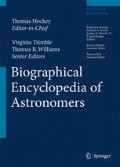Born Brescia, (Italy), 1578
Died Rome, (Italy), 19 April 1643
Benedetto Castelli was one of Galileo Galilei's principal collaborators, an important academic physicist, and a contributor to the diffusion of Copernicanism in the 17th century. He entered the Benedictine order at Brescia in 1575, taking the name Benedetto by which he is now universally known. Before 1604, moving to the monastery at Santa Giusta near Padua, he came into contact with and studied under Galilei from 1604 to sometime in 1607, a period that marked the turning point of his intellectual life, after which he relocated to Cava for a few years. In 1610, likely during the summer of that year when he was back in Brescia, Castelli suggested using the phases of Venus as a test for the Copernican solar system in his correspondence with Galilei; the phases were observed by Galilei in October. They became a central verifying observation described in Galilei's 1632 work, Dialogue on the Two Chief World Systems.
By 1611 Castelli was in Florence, the city to which Galilei had just moved after being appointed mathematician to the Medici court. In 1612, again in correspondence, he suggested to Galilei a method for observing sunspots using real image projection. This is described in the second of Galilei's Letters on Sunspots (1613) in which Castelli is praised as an empirical scientist and described as a monk from Monte Cassino. At Galilei's urging in the court, he was appointed professor of mathematics at the University of Pisa, the same position Galilei had occupied some 20 years before, in 1613; he was confirmed for life in 1624. During this period, Castelli met and mentored Bonaventura Cavalieri, a talented Milanese student whose contributions to the founding of calculus are well known. He resigned his post in 1626 after being called to Rome in 1623 by Pope Urban VIII to serve as papal expert on hydraulics. Water supply was a major engineering concern in the 17th century, and Rome and the papal states were certainly not without serious need of attention. He also tutored the pope's nephew, Tadeo Barberini. Castelli was later appointed professor of mathematics at the University of Rome, retaining this position until his death. His most illustrious pupils there were Evangelista Torricelli and Alfonso Borelli, both of whom would later make important contributions to mathematics and physics.
Castelli's principal work was in hydraulics – not astronomy or mechanics – a field to which he was introduced by Galilei after he had taken his post in Pisa. This included studies of the bilancetta (hydraulic balance), a device first described by Galilei in the 1580s, and Archimedian hydrostatics. His publication Della misura della acque corranti, on the measurement of flow rates in rivers, was a pioneering work in hydrodynamic engineering. His studies also included the new field of radiant heat, which was the subject of a lengthy exchange of letters with Galilei on the effects of color and composition of bodies in their reaction to radiant heat (1637–1638), which, it should be recalled, required considerable ingenuity to measure quantitatively with the thermal apparatus of the day. In correspondence in 1634 regarding the illumination of the Earth and Moon by the Sun, Castelli proffered the conclusion that the brightness of a body is proportional to its surface area and inversely proportional to the square of its distance. He advocated the use of aperture stops to improve the images of refracting telescopes, a technique later extended by Johannes Hevel, and also investigated physiological optics and the camera obscura.
Many of Castelli's most important contributions are known only from secondary references. He produced few papers or treatises during his lifetime, none specifically dealing with astronomy or fundamental mathematics, but he was broadly influential among his contemporaries through his correspondence, and internationally known. His place in the history of science is dominated by a single event, the correspondence in 1613 with Galilei regarding the comparative roles of science (empiricism and theory) and biblical literalism in theology. The letter was subsequently expanded and published by Galilei as the Letter to the Grand Dutchess Christina and served as one of the central points of contention during Galilei's trial before the Inquisition. But Castelli stands as a superb example of a philosophical person of the “seicento” in whose mind and work the Galilean concepts of empiricism took firm hold.
Selected References
Drake, Stillman (1971). “Castelli, Benedetto.” In Dictionary of Scientific Biography, edited by Charles Coulston Gillispie. Vol. 3, pp. 115–117. New York: Charles Scribner's Sons.
——— (1978). Galileo at Work. Chicago: University of Chicago Press.
Fantoli, Annibale (1994). Galileo: For Copernicanism and for the Church. Vatican City: Vatican Observatory Publications.
Masetti Zannini, G. L. (1961). La vita di Benedetto Castelli. Brescia.
Editor information
Editors and Affiliations
Rights and permissions
Copyright information
© 2007 Springer Science+Business Media, LLC.
About this entry
Cite this entry
Shore, S.N. (2007). Castelli, Benedetto (Antonio). In: Hockey, T., et al. The Biographical Encyclopedia of Astronomers. Springer, New York, NY. https://doi.org/10.1007/978-0-387-30400-7_248
Download citation
DOI: https://doi.org/10.1007/978-0-387-30400-7_248
Publisher Name: Springer, New York, NY
Print ISBN: 978-0-387-31022-0
Online ISBN: 978-0-387-30400-7
eBook Packages: Physics and AstronomyReference Module Physical and Materials ScienceReference Module Chemistry, Materials and Physics

